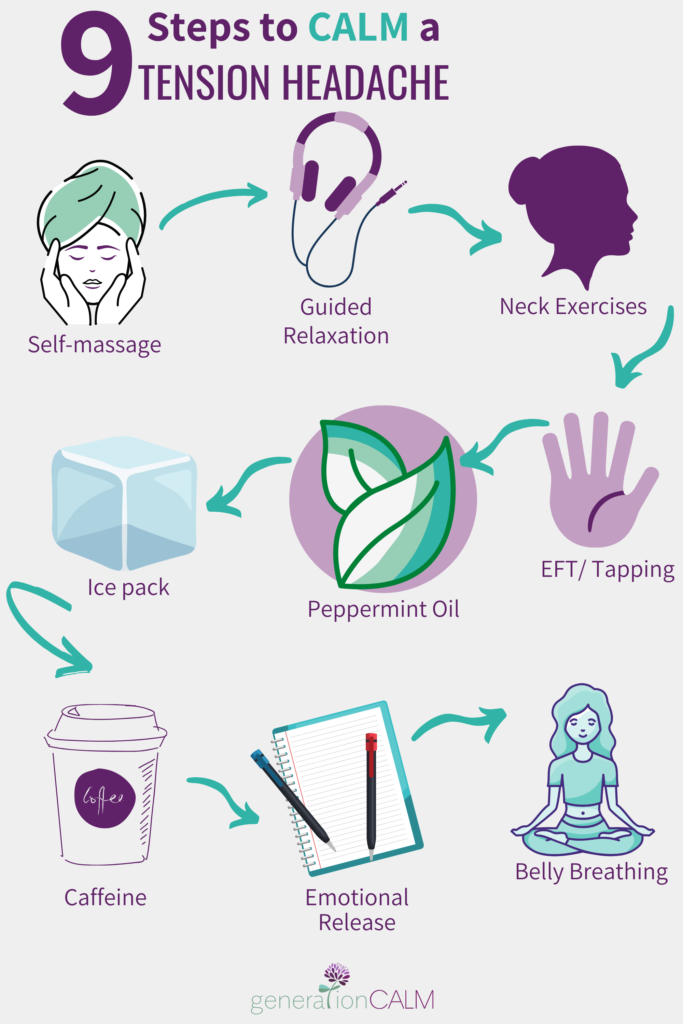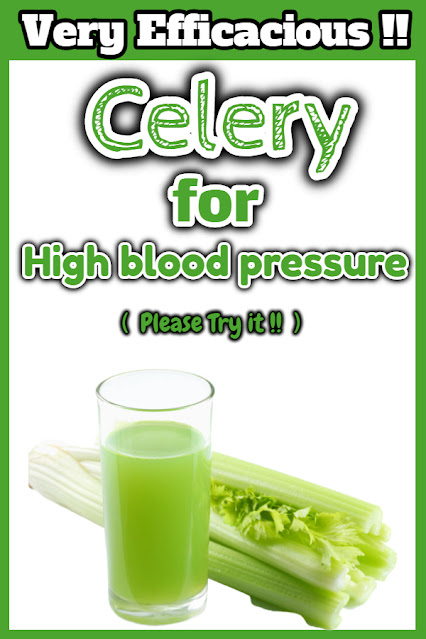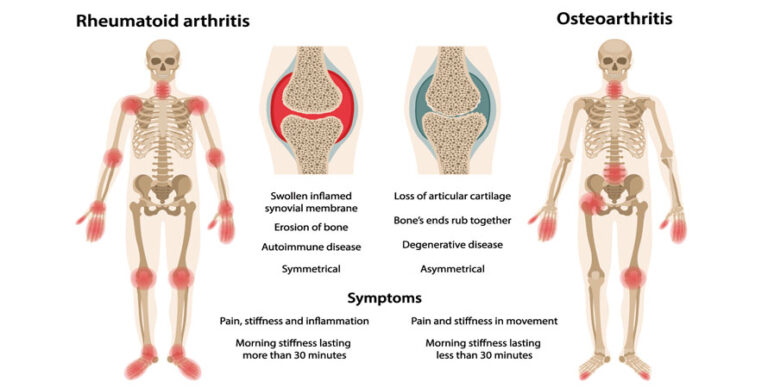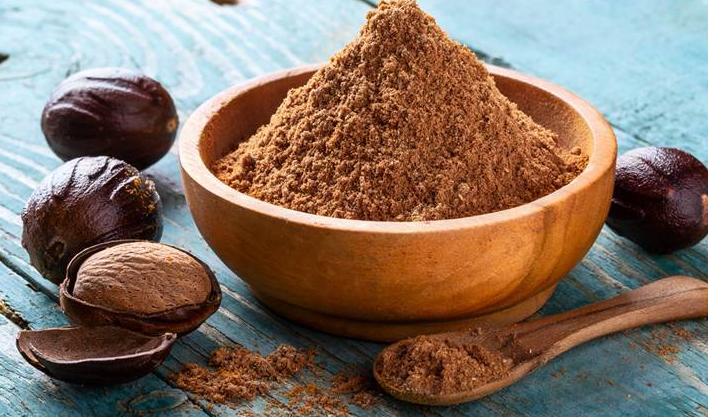Instant Relief: Quick Techniques to Soothe a Tension Headache in Under 5 Minutes
The dull throb begins insidiously. Perhaps it’s a tightening band around your forehead, or a nagging ache at the base of your skull that slowly, relentlessly, begins to encompass your entire head. You’ve been there, haven’t you? That moment when a tension headache announces its unwelcome presence, threatening to derail your focus, your productivity, and your peace of mind. It’s the meeting you can barely concentrate on, the email you can’t quite finish, the simple joy of a conversation that feels clouded by discomfort.
For many of us, the tension headache isn’t just an occasional nuisance; it’s a recurring antagonist in the drama of daily life. And while the long-term solutions of stress management, ergonomic adjustments, and consistent self-care are invaluable – indeed, essential – there are moments when time is of the essence. You need relief, and you need it now. Not in an hour, not after a long nap, but in the precious few minutes before that next critical task or family commitment demands your full attention.
This isn’t just a list of quick tips; it’s a journey into understanding the immediate physiological and psychological levers we can pull to regain control. For the knowledgeable audience, we’ll delve beyond the "what" and into the "why," exploring the mechanisms that make these rapid interventions so surprisingly effective. We’ll tell the story of reclaiming those precious minutes, transforming a looming headache into a manageable discomfort that quickly fades. So, let’s explore an arsenal of techniques designed to provide instant relief, often in under five minutes, allowing you to quickly return to your day, unburdened.
The Unseen Battle: Understanding the Tension Headache
Before we dive into the quick fixes, let’s take a moment to truly understand our adversary. The tension headache is the most common type of primary headache, meaning it’s not caused by another underlying condition. Unlike its more dramatic cousin, the migraine, which often brings throbbing pain, aura, and severe sensitivity to light and sound, the tension headache typically presents as a constant, dull ache. It’s often described as a tight band around the head, or pressure on both sides of the head or at the back of the neck.
What’s Happening Under the Surface?
At its core, a tension headache is believed to be caused by muscle contractions in the head and neck. While the exact pathophysiology is still being researched, the prevailing theory points to a complex interplay of factors:
- Muscle Tension: The most obvious culprit. Stress, poor posture (especially from prolonged computer use or phone scrolling), clenching the jaw (bruxism), and even holding your head in an awkward position for extended periods can cause muscles in the scalp, neck, and shoulders to contract and tighten. This sustained contraction can lead to localized ischemia (reduced blood flow) and the buildup of metabolic waste products, which irritate nerve endings and cause pain.
- Central Sensitization: For some individuals, particularly those with chronic tension headaches, there’s evidence of central sensitization. This means the central nervous system (brain and spinal cord) becomes overly sensitive to pain signals, amplifying even minor muscle tension into significant discomfort. This can be influenced by neurotransmitter imbalances, particularly involving serotonin and norepinephrine.
- Stress Response: The body’s "fight or flight" response, triggered by psychological or physical stress, floods the system with hormones like cortisol and adrenaline. This can lead to increased muscle tension, heightened pain perception, and changes in blood vessel constriction, all contributing to headache genesis.
- Neurovascular Component (Minor): While less prominent than in migraines, there can be a minor neurovascular component, with changes in blood flow and vessel dilation contributing to the sensation of pressure.
Why "Under 5 Minutes" is Plausible for Tension Headaches:
The rapid onset and resolution possible with tension headaches, compared to migraines, lies in their primary mechanism. Migraines often involve deeper neurological and inflammatory pathways that require more time to modulate. Tension headaches, being largely musculoskeletal and stress-related, respond more readily to interventions that:
- Directly relax muscle tissue: Through massage, heat, or stretching.
- Modulate the stress response: Through breathwork, mindfulness, or sensory input.
- Address immediate physiological needs: Such as hydration or electrolyte balance.
Our goal, therefore, is to interrupt this cascade of muscle tension and stress signaling as quickly as possible, allowing the body’s natural state of equilibrium to reassert itself.
The Arsenal of Quick Relief Techniques: Stories of Reclaiming Comfort
Having understood the enemy, let’s equip ourselves with the tools. Each technique is designed for rapid deployment, a quick counter-strike against the encroaching discomfort.
>
Technique 1: Targeted Pressure & Self-Massage – The Power of Touch
I remember my first "aha!" moment with self-massage. It was during a particularly grueling exam period in university. Hours hunched over textbooks had left me with a vice-like grip around my temples. Desperate, I instinctively pressed my thumbs into the aching spots. The initial sharp discomfort gave way to a wave of release, a surprising loosening of the invisible band. It wasn’t a complete cure, but it was the first significant crack in the headache’s armor, and it happened in mere seconds. From that day, I learned to listen to my body’s pressure points.
How to Execute (Under 60 seconds):
- Temple Circles: Place your index and middle fingers on your temples (the soft spot on either side of your forehead, between your eye and hairline). Apply firm, circular pressure for 30 seconds. You can vary the pressure and direction.
- Forehead Sweep: Place your thumbs between your eyebrows, near the bridge of your nose. Slowly sweep them outwards towards your temples, applying gentle but firm pressure. Repeat 5-10 times.
- Base of Skull Release: Clasp your hands behind your head, interlacing your fingers. Let your thumbs rest at the base of your skull, on either side of your spine. Apply upward and inward pressure with your thumbs, feeling for tender spots. Hold pressure for 15-30 seconds, or gently massage in small circles.
- Neck & Shoulder Knead: Use one hand to knead the opposite shoulder and side of the neck, squeezing and releasing the muscles, particularly the trapezius. Focus on any knots or tender spots. Switch sides.
Why it Works (The Knowledgeable Angle):
Self-massage and targeted pressure work on multiple physiological levels:
- Myofascial Release: Tension headaches are often linked to trigger points – hyperirritable spots within a taut band of skeletal muscle. Applying sustained pressure to these points can help "release" the contracted muscle fibers, improving local circulation and flushing out metabolic waste products (like lactic acid) that contribute to pain. This is a form of manual ischemic compression.
- Increased Local Blood Flow: Massage increases blood circulation to the affected area. Enhanced blood flow delivers oxygen and nutrients to oxygen-deprived tissues and helps carry away inflammatory mediators and pain-inducing chemicals.
- Neuromodulation: The pressure stimulates mechanoreceptors in the skin and muscles, sending signals to the brain that can compete with and override pain signals (gate control theory of pain). It also encourages the release of endorphins, the body’s natural painkillers, which have an analgesic effect.
- Parasympathetic Activation: The act of self-massage, particularly when combined with focused breathing, can activate the parasympathetic nervous system, shifting the body from a "fight or flight" (sympathetic) state to a "rest and digest" (parasympathetic) state, promoting overall relaxation and reducing muscle tension.
Variations & Enhancements:
- Acupressure Points: Specific points are recognized in Traditional Chinese Medicine (TCM) for headache relief. For instance, LI-4 (Hegu) between the thumb and index finger, or GB-21 (Jian Jing) on the top of the shoulder. Applying firm pressure to these points for 30-60 seconds can be surprisingly effective. While TCM explains these through energy channels (meridians), from a Western perspective, these points often correspond to nerve bundles or muscle trigger points.
- Tennis Ball/Foam Roller: For deeper neck and shoulder tension, lying on the floor with a tennis ball placed at the base of your skull or under a tight spot in your upper back can provide sustained, targeted pressure.
>
Technique 2: Breathwork & Mindfulness – The Inner Calm
My journey with chronic stress eventually led me to the profound realization that my breath was more than just an automatic function; it was a powerful lever for control. There was a time when a headache would send me spiraling into panic, convinced it would ruin my day. But one afternoon, trapped in a loud office with a burgeoning headache, I tried a simple breathing exercise I’d learned. As I slowly inhaled and exhaled, focusing purely on the sensation of air, I felt not just a distraction, but a tangible softening of the tension. It was like tuning a radio, finding a clearer, calmer frequency within the static of pain.
How to Execute (Under 3 minutes):
- Diaphragmatic Breathing (Belly Breathing): Sit comfortably or lie down. Place one hand on your chest and the other on your abdomen, just below your rib cage. Inhale slowly through your nose, feeling your abdomen rise (your chest should remain relatively still). Exhale slowly through pursed lips, feeling your abdomen fall. Focus on making your exhales slightly longer than your inhales. Perform 10-15 cycles.
- 4-7-8 Breathing: Inhale quietly through your nose for a count of 4. Hold your breath for a count of 7. Exhale completely through your mouth, making a whoosh sound, for a count of 8. Repeat for 3-4 cycles. This technique is particularly potent for rapid relaxation.
- Brief Body Scan: While breathing, quickly scan your body from head to toe. Notice any areas of tension without judgment. On each exhale, mentally send a message of relaxation to those areas, particularly your jaw, neck, and shoulders.
Why it Works (The Knowledgeable Angle):
Breathwork is a direct pathway to influencing the autonomic nervous system:
- Parasympathetic Activation: Deep, slow, diaphragmatic breathing stimulates the vagus nerve, a major component of the parasympathetic nervous system. This activation shifts the body out of the sympathetic "fight or flight" response, which is characterized by muscle tension, increased heart rate, and heightened stress hormone release. By engaging the parasympathetic system, heart rate slows, muscles relax, and the body’s natural restorative processes kick in.
- Reduced Cortisol: Chronic stress and rapid, shallow breathing are associated with elevated cortisol levels. By calming the nervous system through intentional breathing, cortisol levels can decrease, reducing its contribution to muscle tension and inflammation.
- Oxygenation and Carbon Dioxide Balance: Proper diaphragmatic breathing improves oxygen delivery to tissues, including tense muscles, and helps regulate carbon dioxide levels. Dysfunctional breathing patterns can lead to hyperventilation, which, even subtly, can cause blood vessel constriction and contribute to headache symptoms.
- Distraction and Mindfulness: Focusing on the breath provides a powerful distraction from the pain signals. It engages the prefrontal cortex, which can modulate pain perception, and cultivates a sense of mindfulness, allowing you to observe the pain without being consumed by it. This cognitive shift can reduce the emotional distress associated with the headache, which in turn can lower its perceived intensity.
Variations & Enhancements:
- Progressive Muscle Relaxation (Quick Version): Rapidly tense and then relax specific muscle groups (e.g., clench jaw, release; scrunch shoulders, release) while breathing deeply. This heightened awareness of tension and release can be very effective.
- Auditory Anchors: Combine breathwork with calming sounds, like soft instrumental music or nature sounds, if your environment allows.
>
Technique 3: Hydration & Nutritional Nudges – The Internal Fix
It sounds almost too simple, doesn’t it? "Drink more water." But I’ve lost count of the times I’ve felt that familiar head pressure creeping in, only to realize I’ve been so engrossed in work that I haven’t had a sip of water in hours. The first time I tried consciously gulping down two large glasses, I was skeptical. But within minutes, a dull edge of the headache began to recede, as if a parched internal landscape was finally receiving the rain it desperately needed. It was a potent reminder that sometimes the body is simply crying out for basic sustenance.
How to Execute (Under 2 minutes):
- Rapid Hydration: Immediately drink one to two large glasses (16-24 oz) of plain water. If possible, make it slightly cool, as this can sometimes feel more refreshing and help with absorption.
- Electrolyte Boost (Optional): If you suspect dehydration is significant or you’ve been sweating, a pinch of sea salt (about 1/4 teaspoon) dissolved in water, or a quick sip of a low-sugar electrolyte drink, can rapidly restore mineral balance.
- Quick Magnesium Nudge: If accessible, a small handful of almonds or a square of dark chocolate (70% or higher cocoa content) can provide a rapid, albeit small, dose of magnesium.
- Peppermint Oil Application: If you have peppermint essential oil, dilute a drop or two in a carrier oil (like coconut or almond oil) and gently massage it onto your temples or the back of your neck.
Why it Works (The Knowledgeable Angle):
This category addresses immediate physiological imbalances:
- Dehydration Correction: Dehydration is a surprisingly common trigger for tension headaches. When the body is dehydrated, blood volume decreases, which can reduce blood flow to the brain. Additionally, brain tissue can temporarily shrink from fluid loss, pulling away from the skull and activating pain receptors in the meninges (the membranes surrounding the brain). Rapid rehydration can quickly reverse these effects.
- Electrolyte Balance: Electrolytes (sodium, potassium, magnesium, calcium) are crucial for nerve function, muscle contraction, and maintaining fluid balance. Imbalances, often exacerbated by dehydration, can contribute to muscle cramps and spasms, including those in the head and neck. Replenishing them can stabilize cellular function.
- Magnesium’s Role: Magnesium plays a vital role in over 300 enzymatic reactions, including muscle relaxation and neurotransmitter function. Deficiencies are linked to increased muscle excitability and pain sensitivity. While a quick snack provides only a small amount, for some, even a minor boost can contribute to relaxation.
- Peppermint Oil’s Analgesic Effect: Peppermint oil contains menthol, which has analgesic and muscle-relaxant properties. When applied topically, menthol can stimulate cold receptors in the skin, creating a cooling sensation that distracts from pain. It also has vasodilatory effects, which can improve blood flow, and some studies suggest it may modulate pain pathways by affecting calcium channels. Its aroma also offers a sensory distraction and can be calming.
Caveats: While powerful for specific triggers, these are rapid ameliorators, not long-term solutions for chronic issues. If dehydration is a persistent problem, sustained hydration practices are crucial.
>
Technique 4: Temperature Play – The Hot & Cold
The first time I experienced the almost magical effect of temperature on a headache was purely by accident. I had a fever and a terrible headache, and in my hazy state, I just wanted something cold on my forehead. I grabbed a bag of frozen peas, wrapped it in a towel, and pressed it against my temples. The relief was immediate and profound, a numbing calm that settled over the throbbing. Later, I discovered the complementary power of heat for neck tension. It’s a simple, yet incredibly effective, duality.
How to Execute (Under 5 minutes):
- Cold Compress (2-3 minutes): Grab an ice pack, a bag of frozen vegetables, or even a cold, damp washcloth. Apply it to your forehead, temples, or the back of your neck. Hold it in place, allowing the cold to penetrate.
- Warm Compress (2-3 minutes): Alternatively, or in sequence, apply a warm compress (a towel soaked in warm water, or a heat pack) to the back of your neck and shoulders.
- Alternating (Advanced, 5 minutes): Apply cold to the forehead/temples for 2 minutes, then switch to a warm compress on the back of the neck/shoulders for 2 minutes. This can create a stimulating and relaxing effect.
Why it Works (The Knowledgeable Angle):
Temperature manipulation directly impacts blood flow and nerve signaling:
-
Cold Therapy (Cryotherapy):
- Vasoconstriction: Cold causes blood vessels to constrict (vasoconstriction), which can reduce blood flow to the area. If the headache is linked to minor inflammation or vasodilation, this can help reduce swelling and pressure.
- Numbing Effect: Cold directly numbs nerve endings, reducing pain signals transmitted to the brain. This is a form of sensory distraction and local anesthesia.
- Muscle Relaxation (Indirect): While cold might initially cause a muscle to tense, the subsequent relaxation as the cold is removed, or the numbing effect, can ultimately reduce spasm.
-
Heat Therapy (Thermotherapy):
- Vasodilation: Heat causes blood vessels to dilate (vasodilation), increasing blood flow to the muscles. This can help relax tight muscles in the neck and shoulders, which are common contributors to tension headaches, by delivering more oxygen and nutrients and aiding in the removal of metabolic waste.
- Muscle Relaxation: Warmth directly relaxes muscle fibers, reducing stiffness and spasms. This is particularly effective for cervicogenic (neck-related) tension headaches.
- Sensory Distraction: The comforting sensation of warmth can also serve as a distraction from the pain signals.
-
Alternating Therapy: The rapid change in temperature can create a "pumping" effect, enhancing circulation and potentially stimulating a stronger physiological response that facilitates muscle relaxation and pain modulation.
Tips: If you don’t have a dedicated cold pack, a bag of frozen peas or corn works perfectly. For a warm compress, a sock filled with rice and microwaved for 30-60 seconds makes an excellent improvised heat pack.
>
Technique 5: Postural Reset & Micro-Stretches – The Body’s Alignment
My desk job was slowly but surely turning me into a hunchback. The insidious creep of a tension headache became a daily ritual, always starting around 2 PM. I thought it was just the stress of the work. It wasn’t until a sharp-eyed physiotherapist pointed out my "forward head posture" that I realized the connection. The simple act of pulling my chin back, straightening my spine, and rolling my shoulders made an immediate, albeit subtle, difference. It was a revelation: sometimes, the headache isn’t just in your head, but in the way you hold your entire body. These micro-adjustments are my go-to when I feel the familiar strain.
How to Execute (Under 3 minutes):
- Chin Tuck: Sit or stand tall. Gently pull your chin straight back, as if making a double chin, until you feel a stretch at the back of your neck. Hold for 5 seconds, then release. Repeat 5-10 times. This helps to realign the head over the spine.
- Shoulder Rolls: Shrug your shoulders up towards your ears, then roll them back and down in a smooth, circular motion. Repeat 5-10 times forward, then 5-10 times backward. This releases tension in the trapezius and rhomboids.
- Neck Tilts: Gently tilt your head to bring your right ear towards your right shoulder. Hold for 10-15 seconds, feeling the stretch on the left side of your neck. Return to center and repeat on the other side. Do this once or twice per side.
- Gentle Neck Rotations: Slowly turn your head to look over your right shoulder. Hold for a few seconds. Return to center. Turn to look over your left shoulder. Hold. Repeat once per side.
Why it Works (The Knowledgeable Angle):
These movements directly address the musculoskeletal contributors to tension headaches:
- Release of Myofascial Tension: Poor posture, especially "forward head posture" (where the head juts forward), significantly increases the load on the neck and upper back muscles (e.g., sternocleidomastoid, scalenes, suboccipital muscles). This chronic strain leads to muscle shortening, trigger points, and reduced blood flow, all of which radiate pain into the head. Micro-stretches and postural resets help to lengthen these muscles and release fascial restrictions.
- Improved Blood Circulation: Stretching and moving tight muscles can improve local blood flow, delivering oxygen and nutrients while flushing out accumulated metabolic waste products that irritate pain receptors.
- Nerve Decompression: In some cases, severely tight muscles can impinge upon nerves, such as the greater occipital nerve at the base of the skull, leading to cervicogenic headaches. Gentle stretching can decompress these nerves, reducing pain.
- Proprioceptive Feedback: Performing these movements brings awareness to your body’s position in space. This proprioceptive feedback can help you consciously correct poor posture, reducing the ongoing strain that contributes to headaches. It retrains the nervous system to adopt more ergonomic positions.
Quick Check: Take a moment to assess your ergonomic setup. Are your computer screen, chair, and keyboard positioned correctly? Even a brief mental check can prompt a beneficial adjustment.
>
Technique 6: Sensory Deprivation/Stimulation – The Environment Hack
There was a period in my life where my office was a cacophony of ringing phones, fluorescent lights, and constant chatter. My headaches seemed to thrive in that environment. One day, overwhelmed, I retreated to a dark, quiet corner for just five minutes. I closed my eyes, blocked out the noise, and inhaled the calming scent of lavender from a small rollerball I carried. The sheer relief of that sensory "reset" was astonishing. It wasn’t just the quiet; it was the deliberate act of curating my immediate environment, even briefly, that allowed my nervous system to de-escalate.
How to Execute (Under 5 minutes):
- Dim the Lights & Seek Quiet (1-2 minutes): If possible, move to a dimly lit or dark room. If not, simply close your eyes. Minimize auditory stimulation by moving away from noise sources or, if appropriate, using noise-canceling headphones or earplugs.
- Close Your Eyes & Rest (1-2 minutes): Simply closing your eyes and resting them, without trying to do anything else, can reduce eye strain and sensory input.
- Aromatherapy (30 seconds): If you have essential oils like peppermint or lavender, put a drop on a tissue or your wrist and inhale deeply a few times. Peppermint provides a stimulating, cooling sensation, while lavender is known for its calming properties.
- Calming Sounds (Optional, 2-3 minutes): If you can’t achieve silence, play soft, calming instrumental music, white noise, or nature sounds (like ocean waves or gentle rain) through headphones.
Why it Works (The Knowledgeable Angle):
This technique directly manipulates sensory input to calm the nervous system:
- Reduced Sensory Overload: Many tension headache sufferers experience heightened sensitivity to light, sound, and smell, particularly as the headache intensifies. Reducing these external stimuli allows the nervous system to "dial down" its arousal state, thereby reducing the intensity of pain signals and promoting relaxation. The brain has fewer competing signals to process, allowing it to focus on recovery.
- Parasympathetic Activation: A quiet, dark environment, coupled with calming aromas or sounds, signals safety and relaxation to the brain. This activates the parasympathetic nervous system, counteracting the stress response and promoting muscle relaxation and pain modulation.
- Olfactory Pathways and Emotion: The olfactory bulb, which processes smells, is directly connected to the limbic system, the part of the brain involved in emotion, memory, and stress response. Certain aromas (e.g., lavender’s linalool and linalyl acetate) have been shown to have anxiolytic (anxiety-reducing) and calming effects by influencing neurotransmitter activity. Peppermint’s menthol, as discussed, can also directly affect pain pathways.
- Distraction and Focus: Engaging with pleasant, calming sensory input (like soft music or a soothing scent) provides a gentle distraction from the headache, shifting attention away from the pain and towards a more neutral or positive experience.
Caution: Ensure proper dilution of essential oils before applying them to the skin. Some individuals may be sensitive to certain scents; always test a small area first.
>
Beyond the Five Minutes: Sustaining Relief & Prevention
These quick techniques are powerful emergency tools, your rapid response unit against the sudden onset of a tension headache. They buy you time, ease immediate discomfort, and empower you with a sense of control. But the story of conquering tension headaches doesn’t end in five minutes. It’s a continuous narrative of understanding your body, managing your environment, and integrating preventative measures into your daily life.
My own journey taught me that while the quick fixes were lifesavers, true freedom from chronic headaches came from a more holistic approach. It was about recognizing the patterns, acknowledging the triggers, and building resilience.
Long-Term Strategies for a Headache-Free Future:
- Stress Management: This is paramount. Techniques like regular meditation, yoga, spending time in nature, journaling, and setting healthy boundaries can significantly reduce the frequency and intensity of tension headaches. The story of my own life changed when I learned to proactively manage stress rather than react to its physical manifestations.
- Ergonomic Excellence: Invest in an ergonomic workspace. Ensure your computer screen is at eye level, your chair supports your lower back, and your keyboard and mouse allow for neutral wrist positions. Regular posture checks throughout the day are crucial.
- Regular Movement & Exercise: Consistent physical activity, especially exercises that strengthen core muscles and improve posture, can prevent muscle imbalances and tension buildup. Even short breaks to stretch and move every hour can make a significant difference.
- Hydration & Nutrition: Make hydration a habit, not just a reaction to thirst. Maintain a balanced diet rich in magnesium (leafy greens, nuts, seeds, whole grains) and avoid known food triggers if you have them.
- Quality Sleep: Prioritize 7-9 hours of quality sleep per night. Sleep deprivation can lower your pain threshold and exacerbate muscle tension. Establish a consistent sleep schedule and a relaxing bedtime routine.
- Professional Guidance: Don’t hesitate to seek help. A physiotherapist can help identify muscle imbalances and provide targeted exercises. A massage therapist can release stubborn knots. A doctor can rule out other conditions and discuss preventive medications if headaches are severe and frequent. My chiropractor helped me understand the importance of spinal alignment in managing my chronic neck tension.
- Mind-Body Practices: Integrating mindfulness into your daily routine, beyond just during a headache, can train your nervous system to be less reactive to stressors.
- Limit Screen Time: Digital eye strain and prolonged focus on screens contribute significantly to tension headaches. Implement the 20-20-20 rule (every 20 minutes, look at something 20 feet away for 20 seconds).
The Power of Personal Agency
The story of Instant Relief isn’t just about the techniques; it’s about the empowerment that comes from knowing you have tools at your disposal. It’s about understanding that you are not a helpless victim of pain, but an active participant in your own well-being. Each time you successfully soothe a headache in under five minutes, you reinforce your capacity for self-care and strengthen your resolve against future discomfort.
These methods, rooted in physiological understanding and mindful awareness, offer a pathway to quickly disrupt the cycle of tension and pain. They are small acts of rebellion against discomfort, allowing you to reclaim your focus, your energy, and your day. Experiment with them, discover which ones resonate most deeply with your body’s needs, and build your own personalized toolkit for rapid relief. The journey to a headache-free existence may be ongoing, but with these quick techniques, you hold the power to write a story where discomfort is a brief interlude, not the main event.







